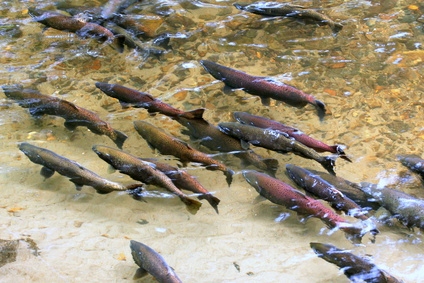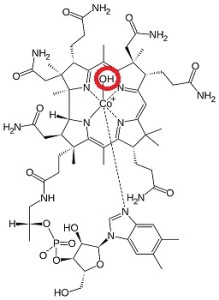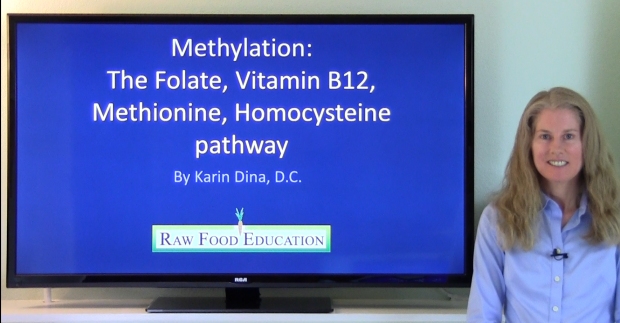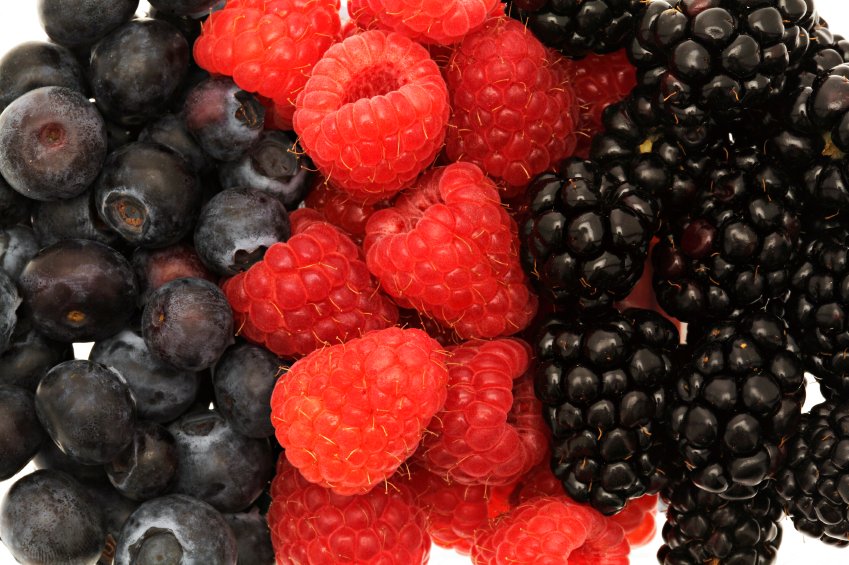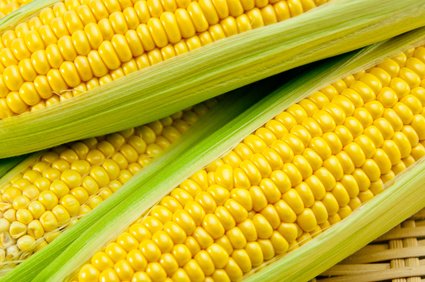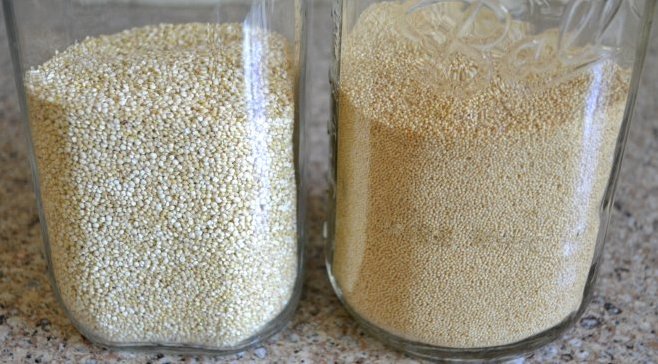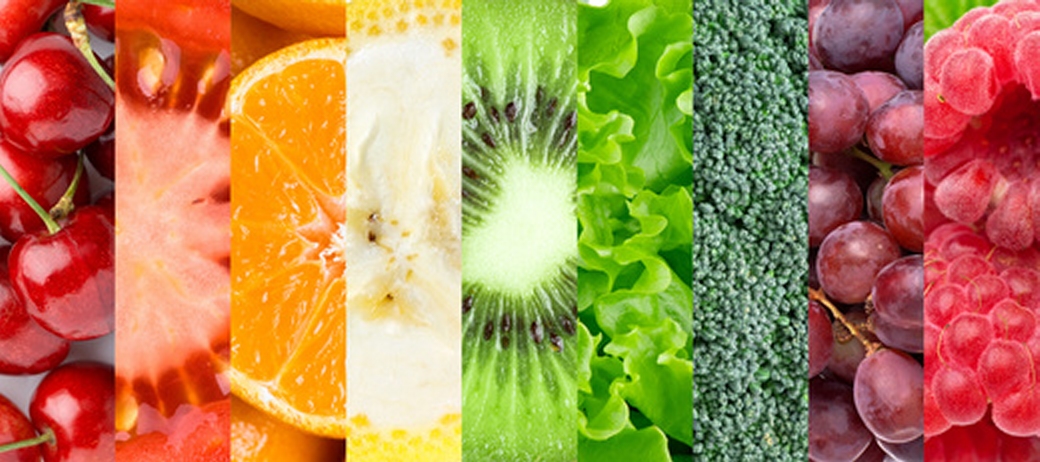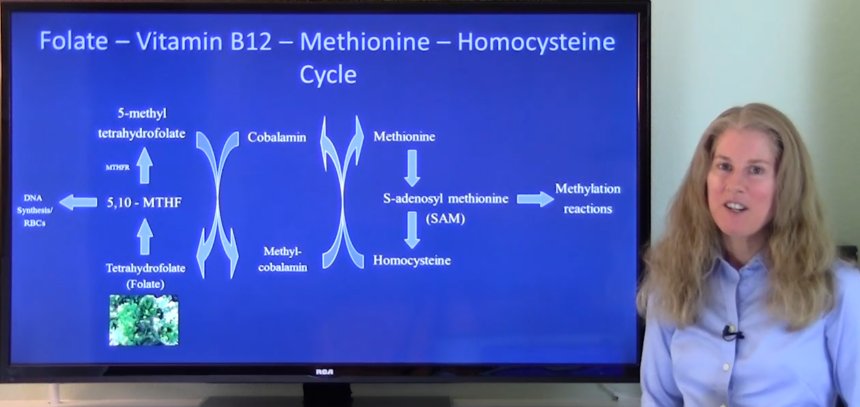 The primary measurement doctors use for testing blood sugar regulation is known as fasting glucose. Fasting in this case means the patient has not consumed any food or drink for the past 12 hours so we have a baseline, in between meals reading. Glucose, the simple carbohydrate that is the preferred source of fuel for nearly all cells in our body, is transported through the bloodstream in order to be distributed to all of those cells. A concentration of glucose between 65 and 99 mg per deciliter of blood is generally considered good and healthy, although I personally don’t like to see it rise above 90.
The primary measurement doctors use for testing blood sugar regulation is known as fasting glucose. Fasting in this case means the patient has not consumed any food or drink for the past 12 hours so we have a baseline, in between meals reading. Glucose, the simple carbohydrate that is the preferred source of fuel for nearly all cells in our body, is transported through the bloodstream in order to be distributed to all of those cells. A concentration of glucose between 65 and 99 mg per deciliter of blood is generally considered good and healthy, although I personally don’t like to see it rise above 90.
What if your glucose level is always within the normal range, but one time you were really stressed or scared while your blood was being drawn? Given that our glucose level tends to increase when we are stressed, your blood sugar would very likely be higher than normal. Maybe it would even be in the diabetic range, in other words 125 mg/dl or greater. Does that mean you should start medical treatment for diabetes? Probably not. But how can you know for sure if your glucose was just high at the time your blood was drawn, or if there really is a problem overall? This is one situation where a test known as A1c comes in handy.
(Hemoglobin) A1c is a measurement of the average blood sugar level over the past few months. While being stressed at the time of a blood draw can exert a major influence over your immediate glucose level, those 10 or 20 minutes of elevated glucose will not affect the average measurement over the past few months. If A1c was measured in the same blood draw and was in the appropriately low range, that would confirm that your unusually high glucose reading was indeed unusual, and therefore nothing to worry about. Without the A1c measurement, you are still left wondering.
I have seen this type of benefit by measuring A1c in my clinical practice. I have also seen it occur the other way around, where a patient had an appropriately low glucose reading, but elevated A1c. In that case we knew there was a problem, even though the glucose measurement did not indicate it. From there we began a discussion about which dietary changes are most favorable for blood sugar to be regulated most effectively in the body. That discussion centers around insulin resistance vs. insulin sensitivity, and how the fats we do and don’t consume affect that, in addition to exercise, sleep, stress, etc. It does NOT center around avoiding carbohydrates, although making the distinction between healthy sources of carbohydrates and unhealthy ones does come into play. One of my favorite parts of going over lab results with patients is looking at the usually excellent blood sugar numbers such as glucose and A1c in high fruit eaters, but that is another story…
The bottom line for this article is that A1c can often be a very useful test when analyzed by a clinician who knows how to utilize it appropriately. Fasting glucose is very useful as well, and in certain circumstances can take the lead over A1c. In our Mastering Raw Food Nutrition curriculum, we go into a great deal of depth about the ins and outs of glucose, A1c and how it can tell the average blood sugar level, insulin, insulin resistance vs. insulin sensitivity, insulin receptor function in the cell membrane, how the fats we eat affect this and which ones to include more of in your diet and which ones to include less of, fruit, vegetables, fiber, etc. Even though it is less important than many other factors, we even discuss the glycemic index within the appropriate perspective of plant based and raw food diets and all the other variables listed above.
We hope you have enjoyed this tidbit about the usefulness of the hemoglobin A1c test!
One of the best ways to keep in touch with us is to join our email list. You’ll receive a free copy of Our Top 12 Strategies for Long Term Success on A Raw Plant-Based Diet eBook along with regular information about raw food and plant-based diets and periodic promotions for our classes, events, and other offerings!
Where does DHA come from?
We hope your summer has been going well! We’ve been doing quite a bit of research lately on a variety of raw food nutrition related topics in preparation for our Mastering Raw Food Nutrition and Educator Course beginning in early September.
One thing we really enjoy doing in our classes is dispelling nutritional myths. Here’s a great example. You’ve probably heard that cold water fish and fish oil contain an omega 3 fat called DHA. Numerous educators, authors, and doctors have said that fish, or fish oil, are the sole sources of DHA.
What many people don’t realize is that DHA is produced much lower on the cold water aquatic food chain by certain types of algae. Fish and other marine animals obtain their DHA when they eat this DHA containing algae. This is how DHA progresses up the aquatic food chain.
DHA plays many important roles in the human body, including brain function. It is a super-unsaturated fat that contains 6 double bonds. These double bonds on the one hand allow DHA to conduct the electrical activity needed for brain function, while on the other hand these same 6 double bonds make DHA very susceptible to oxidation. Oxidation is another name for free radical damage.
DHA therefore is generally only made by organisms when they need it, or when metabolic conditions are favorable. The 6 double bonds in DHA make it very fluid and flexible and confers to it protection from freezing. This is why we see DHA in cold water aquatic organisms, such as salmon, krill, and certain types of cold water algae, but not in warm water aquatic organisms who do not need protection from freezing.
The human body makes DHA rather easily when nutritional and metabolic conditions are favorable. We know omega 3 conversion is a controversial topic, yet is one of our favorites. We love discussing our research and clinical experience with vegans and raw vegans regarding DHA, and so much else.
If you're interested in taking your knowledge to the next level.........
We cover this topic and so much more in our online Mastering Raw Food Nutrition and Educator Course. For more class details, click here.
One of the best ways to keep in touch with us is to join our email list. You’ll receive a free copy of Our Top 12 Strategies for Long Term Success on A Raw Plant-Based Diet eBook along with regular information about raw food and plant-based diets and periodic promotions for our classes, events, and other offerings!
What are the different forms of vitamin B12?
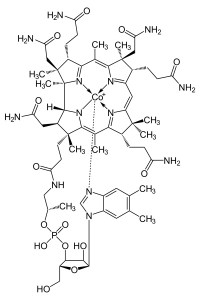 Over the years, people have asked me about the differences between the available supplemental forms of vitamin B12. What are they? Do they occur in nature or are they made in a laboratory? Do some forms work “better” than others?
Over the years, people have asked me about the differences between the available supplemental forms of vitamin B12. What are they? Do they occur in nature or are they made in a laboratory? Do some forms work “better” than others?
The scientific name for vitamin B12, cobalamin, is derived from the element cobalt found at the center of the vitamin B12 molecule. There are several different forms of vitamin B12, each named for the chemical group attached to cobalt, including hydroxocobalamin, methylcobalamin, cyanocobalamin, and adenosylcobalamin. I have seen these forms of B12 available as individual supplements or in multivitamin formulas.
Hydroxocobalamin
Hydroxocobalamin is a naturally-occurring form of vitamin B12, as it is made by certain bacteria including some strains that live in soil. Not all types of bacteria make vitamin B12 and not all soil contains B12 producing bacteria. Yeast, mushrooms and other types of fungus do not produce vitamin B12, neither do animals nor plants.
Hydroxocobalamin is NOT active in the human body; it requires conversion to a human bioactive form. Hydroxocobalamin has an –OH (hydroxy) group attached to cobalt in the center of the vitamin B12 molecule. To activate this form of B12, the human body removes the –OH group and replaces it with, for example, a methyl (–CH3) group to create the human bioactive form of vitamin B12, methylcobalamin.
Methylcobalamin
Methylcobalamin is a form of vitamin B12 that is involved in methylation reactions in the human body. Another of my videos covers the importance of methylation and the role played by this form of vitamin B12, so I would encourage you to view it for further explanation. Dr. Rick and I have used methylcobalamin for many years and find it to be a reliable form of B12 for our needs. We especially like this form of vitamin B12 because it is a human bioactive form and does not require conversion.
Cyanocobalamin
Cyanocobalamin is a synthetic form of B12 made exclusively in a laboratory. It is not a human bioactive form of vitamin B12 and is not made by bacteria in nature. Cyanocobalamin has a –CN (cyano) group attached to cobalt in the center of the vitamin B12 molecule. Many people have expressed concern about this cyano group as being problematic or toxic, but I have yet to see research or clinical data indicating the use of cyanocobalamin as being associated with these types of issues. When one expresses concern to me, I suggest the use of another supplemental form. As mentioned earlier, I have been using methylcobalamin for many years with good results. If someone is not getting the results they want from their vitamin B12 supplement, clinically or otherwise, I suggest that they contact a qualified healthcare provider to help them find the solution that works best for them.
Despite this controversy, cyanocobalamin is one of the most popular supplemental forms of vitamin B12 because of its stability and shelf-life. For example, cyanocobalamin has a longer shelf-life than methylcobalamin, so supplement manufacturers like to produce and sell it. Since cyanocobalamin is not human bioactive, our body must convert it to one of the human bioactive forms. In which case, the body must remove the –CN group and replace it with either a methyl group or an adenosyl group.
Adenosylcobalamin
Like methylcobalamin, adenosylcobalamin is one of the human bioactive forms of vitamin B12. This is the form of vitamin B12 that can be stored by our body, specifically in our liver. All previously discussed forms of B12 can be converted into adenosylcabalamin for storage, when our body has more vitamin B12 than is needed for body function.
Adenosylcobalamin is also very important for energy-producing reactions in the human body, as are various other B vitamins. Additionally, adenosylcobalamin is responsible for keeping methylmalonic acid levels appropriately low in the human body. I have a recent video and article describing the significance of methylmalonic acid and its conversion by adenosylcobalamin in the human body, and would encourage you to view it for more information.
Interested in taking your vitamin B12 and nutrition knowledge to the next level? We cover this topic and so much more in our online Mastering Raw Food Nutrition and Educator Course. For more class details, click here.
Additionally, our book The Raw Food Nutrition Handbook: An Essential Guide to Understanding Raw Food Diets addresses many hot topics in raw food nutrition such as vitamin D, essential fats, protein, nutrient content of raw food diets, food combining, enzymes, hydration, vitamins, minerals, and many more. We value education on these important topics and are happy to finally bring this book to you. The book is available on Amazon and other online booksellers.
One of the best ways to keep in touch with us is to join our email list. You’ll receive a free copy of Our Top 12 Strategies for Long Term Success on A Raw Plant-Based Diet eBook along with regular information about raw food and plant-based diets and periodic promotions for our classes, events, and other offerings!
Why is vitamin B12 so important for our health? How is vitamin B12 used in the human body?
Many people over the years have asked me about why vitamin B12 is so important for our health and what vitamin B12 actually does in the human body. Vitamin B12 is involved in numerous methylation reactions throughout the body and in a vitamin B12 deficiency, these reactions can become compromised.
Vitamin B12 is involved in the production of our genetic code (DNA and RNA), activation of folate, production of red blood cells, keeping homocysteine appropriately low in our body, the production of certain cell membrane components, the production of certain neurotransmitters (including serotonin, melatonin, epinephrine, and dopamine), important reactions involving energy production, and nervous system function. The bottom line is that vitamin B12 is vitally important for a number of life-sustaining activities in our body and should not be overlooked when considering one’s overall health.
Check out this video for more details:
The information in this video builds on a video I did several months ago on the vitamin B12 – folate connection. If you're interested in taking your knowledge to the next level.........
We cover this topic and so much more in our online Mastering Raw Food Nutrition and Educator Course. For more class details, click here.
Additionally, our book The Raw Food Nutrition Handbook: An Essential Guide to Understanding Raw Food Diets addresses many hot topics in raw food nutrition such as essential fats, protein, nutrient content of raw food diets, food combining, enzymes, hydration, vitamins, minerals, and many more. We value education on these important topics and are happy to finally bring this book to you. The book is available on Amazon and other online booksellers.
One of the best ways to keep in touch with us is to join our email list. You’ll receive a free copy of Our Top 12 Strategies for Long Term Success on A Raw Plant-Based Diet eBook along with regular information about raw food and plant-based diets and periodic promotions for our classes, events, and other offerings!
What do fruits and vegetables have in common with fall foliage?
One answer is very simple: antioxidants. Xanthophylls and carotenoids are two types of antioxidants found in fruits, vegetables, and fall foliage.
Regarding fruits and vegetables, xanthophylls are yellow plant pigments found in these foods and leafy greens. Well-known xanthophylls include lutein and zeaxanthin which have been studied for potential benefits in human vision. Carotenoids are orange plant pigments found in some leafy greens and orange fruits and vegetables. Well-known carotenoids include beta carotene and alpha carotene.
Regarding leaves on trees, xanthophylls and carotenoids are present in leaves for the entire life cycle and are only revealed when chlorophyll production ceases toward the end of this cycle, which happens on a large scale in the fall. Chlorophyll is a green pigment that plays a role in creating energy for green plants from sunlight through a process called photosynthesis. Chlorophyll breaks down with exposure to sunlight throughout the life cycle of leaves and therefore constantly has to be replaced. As autumn approaches and a leaf approaches the end of its life, chlorophyll is no longer replaced by the plant, revealing the xanthophylls and/or carotenoids underneath.
In addition to yellow and orange pigments, we see red pigments called anthocyanins in some fall foliage. Other anthocyanins are purple and blue in color and are found in blueberries, raspberries, and blackberries. In contrast to xanthophylls and carotenoids, anthocyanins are not present throughout the life of the leaf, but instead are made at the end of the life cycle when chlorophyll production ceases. Not all leaves contain anthocyanins.
To summarize, xanthophylls, carotenoids, and anthocyanins are groups of antioxidants found in both fall foliage and fruits and vegetables. All three types of phytonutrients help protect the leaves of trees from stresses such as constant sun exposure which can generate free radicals. This is especially true for xanthophylls and carotenoids as they are present for the entire life cycle of the leaf. Similarly, the xanthophylls, carotenoids, and anthocyanins we eat from fruits and vegetables are thought to help protect our internal tissues from the free radicals to which they are exposed.
What about the brown pigment seen in some fall foliage? This pigment is called tannin and is revealed when chlorophyll, xanthophylls, carotenoids, and anthocyanins break down near the end of the leaf life cycle.
Interested in taking your nutrition knowledge to the next level?
We cover this topic and so much more in our online Mastering Raw Food Nutrition and Educator Course. For more class details, click here.
Additionally, our book The Raw Food Nutrition Handbook: An Essential Guide to Understanding Raw Food Diets addresses many hot topics in raw food nutrition such as essential fats, protein, nutrient content of raw food diets, food combining, enzymes, hydration, vitamins, minerals, and many more. We value education on these important topics and are happy to finally bring this book to you. The book is available on Amazon and other online booksellers.
One of the best ways to keep in touch with us is to join our email list. You’ll receive a free copy of Our Top 12 Strategies for Long Term Success on A Raw Plant-Based Diet eBook along with regular information about raw food and plant-based diets and periodic promotions for our classes, events, and other offerings!
Gluten in Foods: Common and Uncommon Knowledge
Gluten is a popular and controversial topic for a number of reasons, with very strong voices on all sides of the conversation. Being a clinician, I always have the interest of the individual in mind given that the achievement of personal health is the ultimate goal. To this end, I am constantly looking for reliable information grounded in reliable biochemistry, physiology, research, and clinical experience to help people reach their health goals, especially since much of the most compelling information is not common knowledge. There are many simple facts that are well understood about gluten which are often perpetuated in the media, but there are some important pieces of the gluten puzzle not popularly known or well understood. For the past couple of years, I have been hearing from students and other people with gluten-related health challenges that their gluten free diet was not getting them the results they were expecting. On closer inspection and with some recent research, I learned some fascinating information that I will cover in this article. But for now, let’s start with:
The basics
Foods that contain gluten are found in one plant family, the grain family, also known as the grass family. The scientific name for this family is the Poaceae. Often people may think that grains and grasses are in separate plant families, when in fact they are in the same plant family.
Although gluten is found only in grains, not all members of the grain family contain gluten. Currently, wheat, rye, barley, triticale, spelt, and kamut are the grain family members considered to contain true gluten. These foods, or foods that contain these foods as ingredients, such as certain processed or prepared foods, contain true gluten. Processed foods can often hide gluten-containing ingredients in them, so it’s important to read labels. Despite these grains being identified as containing gluten, there has been some concern about the gluten-free status of other members of the grain family. A 2009 study showed that a percentage of compliant people with celiac disease (gluten intolerance) on a gluten free diet still did not get the results they were seeking in terms of symptom reversal and lab test results. One of the possibilities considered by the researchers was cross contamination of their diet with gluten containing grains. Another concern raised was the consumption of other members of the grain family that contain proteins which resemble gluten.
The controversy
There are several perceived gluten free grains that are currently under investigation and information on them is growing, but for our purposes, we will focus on oats and corn, two of the most popularly consumed gluten free grains. Oats are a popular breakfast food and corn is commonly found in many forms in processed and prepared foods.
Many sources consider oats to be gluten free, but there are some challenges with them. Oats can sometimes be processed in facilities that may also process gluten containing grains, so there may be some cross contamination between these other grains and oats. Another consideration is avenin, a protein found in oats that is biochemically similar to gluten. Some people who are sensitive to gluten may have a similar experience with oats for this reason. Recent research indicates there is a wide range of variation in potential effects that different cultivated varieties of oats can have on gluten intolerant individuals. This means that some varieties of oats may have notable effects while others may have less of an effect.
Corn is also a member of the grain family, and like oats, is considered to be gluten free by many sources. However, corn contains zein; a protein that is biochemically similar to gluten and is often referred to as “corn gluten.” A study published in 2013 indicated that some gluten intolerant individuals may have symptoms and lab test results consistent with the ingestion of gluten containing grains despite adherence to a gluten free diet. Corn consumption by these individuals was cited as being a possible reason for this outcome. The researchers also noted that even though a gluten intolerant individual may not experience overt symptoms from eating corn, there may still be small intestine effects that can be identified through laboratory testing.
At this time, more research is needed to fully understand the gluten status of oats, corn, and other members of the grain family. In the meantime, there are plenty of foods that do not contain gluten or gluten-like proteins. For example, foods commonly consumed on a raw plant based diet such as fruits, vegetables, sea vegetables, nuts, and seeds are not members of the grain family and therefore do not contain gluten. Although anything that can germinate (including grains) is botanically considered a “seed,” commonly understood seeds such as chia, sesame, pumpkin, sunflower, hemp, flax, and poppy seeds do not contain gluten.
Quinoa and amaranth are often mistaken for grains, but they are not members of the grain family. They are members of the amaranth plant family (Amaranthaceae), and do not contain gluten. Amaranth and quinoa are often referred to as pseudograins or pseudocereals, because of their resemblance to true grains.
The Bottom Line
The good news is that if one is eating a whole food plant based diet that does not contain members of the grain family (Poaceae), they are consuming a diet free of gluten. Gluten is an area of nutrition with ongoing investigation. Sometimes it takes a while for this research to reach the general population, so my goal here is to provide tools of exploration for people who are seeking their greatest health potential. In our Science of Raw Food Nutrition series of classes that we teach at Living Light, we cover gluten and other popular cutting edge raw food and nutrition related topics to assist you in achieving your health goals.
If you're interested in taking your knowledge to the next level.........
We cover this topic and so much more in our online Mastering Raw Food Nutrition and Educator Course. For more class details, click here.
Additionally, our book The Raw Food Nutrition Handbook: An Essential Guide to Understanding Raw Food Diets addresses many hot topics in raw food nutrition such as essential fats, protein, nutrient content of raw food diets, food combining, enzymes, hydration, vitamins, minerals, and many more. We value education on these important topics and are happy to finally bring this book to you. The book is available on Amazon and other online booksellers.
One of the best ways to keep in touch with us is to join our email list. You’ll receive a free copy of Our Top 12 Strategies for Long Term Success on A Raw Plant-Based Diet eBook along with regular information about raw food and plant-based diets and periodic promotions for our classes, events, and other offerings!
References:
Fric P, Gabrovska D, Nevoral J. Celiac disease, gluten-free diet, and oats. Nutr Rev. 2011 Feb;69(2):107-15.
Lanzini A, Lanzarotto F, Villanacci V, Mora A, Bertolazzi S, Turini D, Carella G, Malagoli A, Ferrante G, Cesana BM, Ricci C. Complete recovery of intestinal mucosa occurs very rarely in adult coeliac patients despite adherence to gluten-free diet. Aliment Pharmacol Ther. 2009 Jun 15;29(12):1299-308.
Maglio M, Mazzarella G, Barone MV, Gianfrani C, Pogna N, Gazza L, Stefanile R, Camarca A, Colicchio B, Nanayakkara M, Miele E, Iaquinto G, Giardullo N, Maurano F, Santoro P, Troncone R, Auricchio S. Immunogenicity of two oat varieties, in relation to their safety for celiac patients. Scand J Gastroenterol. 2011 Oct;46(10):1194-205.
Ortiz-Sánchez JP, Cabrera-Chávez F, de la Barca AM. Maize prolamins could induce a gluten-like cellular immune response in some celiac disease patients. Nutrients. 2013 Oct 21;5(10):4174-83.
Silano M, Pozo EP, Uberti F, Manferdelli S, Del Pinto T, Felli C, Budelli A, Vincentini O, Restani P. Diversity of oat varieties in eliciting the early inflammatory events in celiac disease. Eur J Nutr. 2014 Aug;53(5):1177-86.
Real A, Comino I, de Lorenzo L, Merchán F, Gil-Humanes J, Giménez MJ, López-Casado MÁ, Torres MI, Cebolla Á, Sousa C, Barro F, Pistón F. Molecular and immunological characterization of gluten proteins isolated from oat cultivars that differ in toxicity for celiac disease. PLoS One. 2012;7(12):e48365.
How can folate mask a vitamin B12 deficiency?
This pathway is a little biochemically-intense, so I encourage you to watch the video first and then read the text below for clarification.
Vitamin B12 converts homocysteine to methionine by transferring methyl groups from 5-methyl tetrahydrofolate to homocysteine.
In a vitamin B12 deficiency, we often see elevated homocysteine levels, because vitamin B12 is not available to transform homocysteine into methionine. So, homocysteine levels increase.
In a vitamin B12 deficiency we can also see large red blood cells, referred to as macrocytic anemia, because vitamin B12 is not available to convert 5-methyl tetrahydrofolate back into folate. This is called the "methyl folate trap", where folate is "trapped" in the form of 5-methyl tetrahydrofolate. Folate is used to create red blood cells and DNA, and when there isn't enough folate available, red blood cells do not fully mature and stay large. On a lower folate diet, such as with many versions of the standard western diet, we tend to see this situation.
However, when someone with a vitamin B12 deficiency eats a higher folate diet, such as on a plant-based diet, there is a constant supply of folate to create red blood cells and DNA, so red blood cells may appear normal in size. This is how folate can mask a vitamin B12 deficiency. In other words, one needs look beyond the size of red blood cells when testing for vitamin B12 deficiency, and employ other reliable vitamin B12 tests. Accurate vitamin B12 testing by a knowledgeable, licensed clinician is essential for determining one's vitamin B12 status.
If you're interested in taking your knowledge to the next level.........
We cover this topic and so much more in our online Mastering Raw Food Nutrition and Educator Course. For more class details, click here.
One of the best ways to keep in touch with us is to join our email list. You’ll receive a free copy of Our Top 12 Strategies for Long Term Success on A Raw Plant-Based Diet eBook along with regular information about raw food and plant-based diets and periodic promotions for our classes, events, and other offerings!

